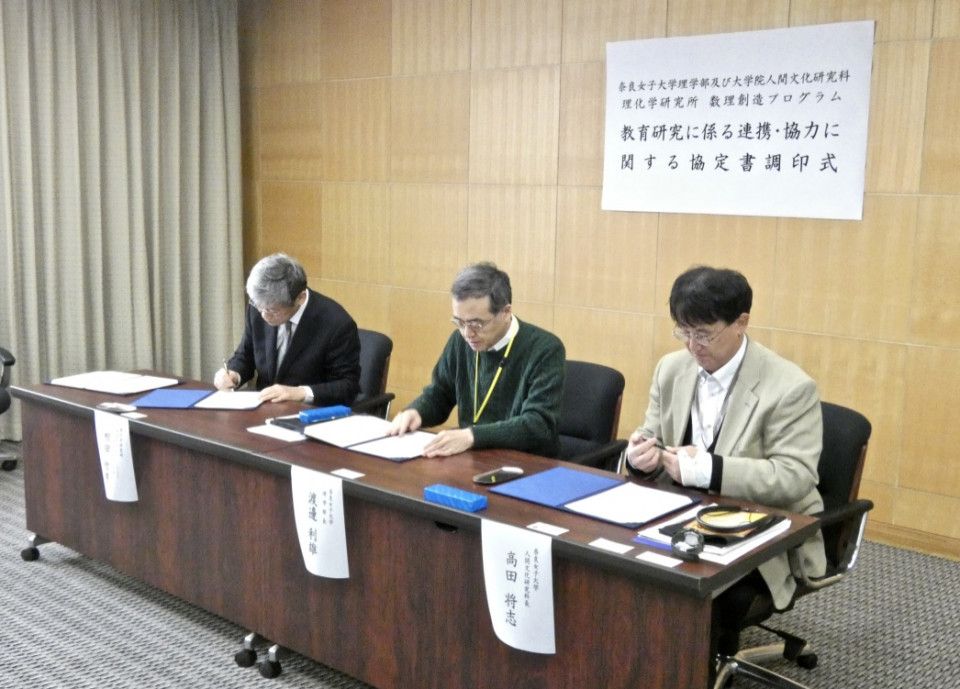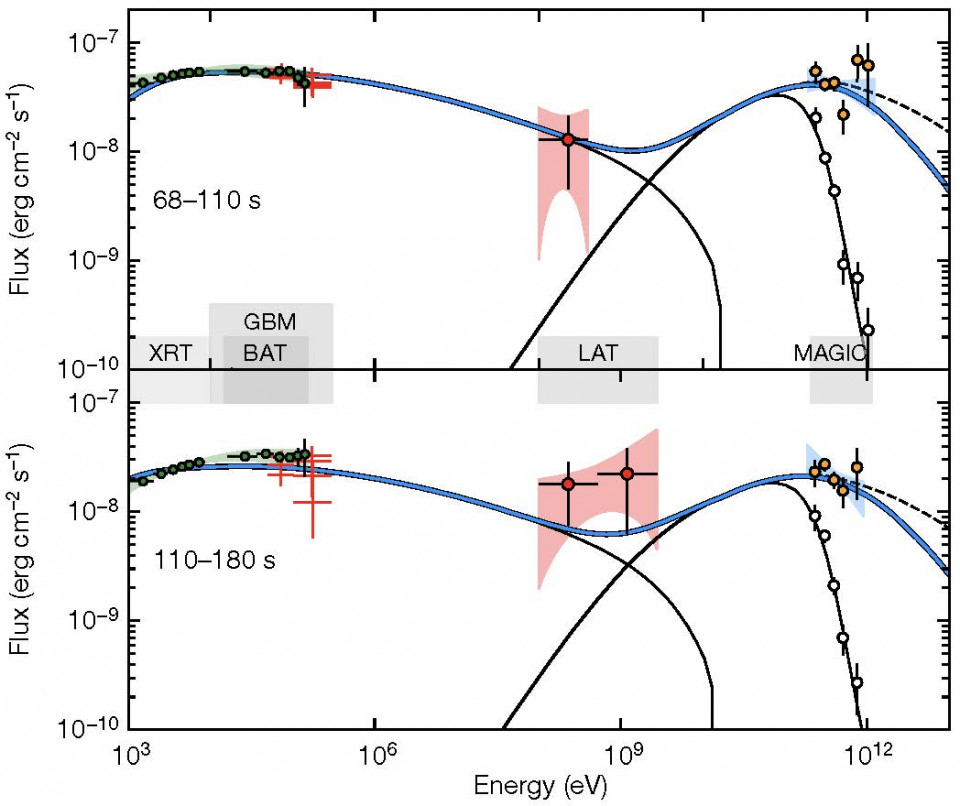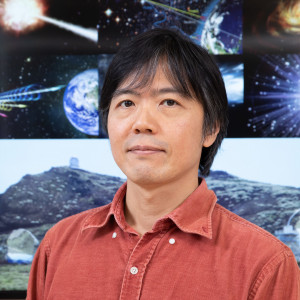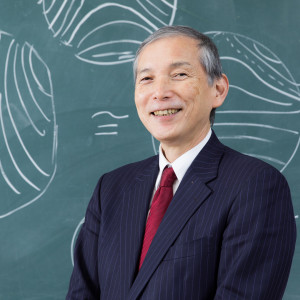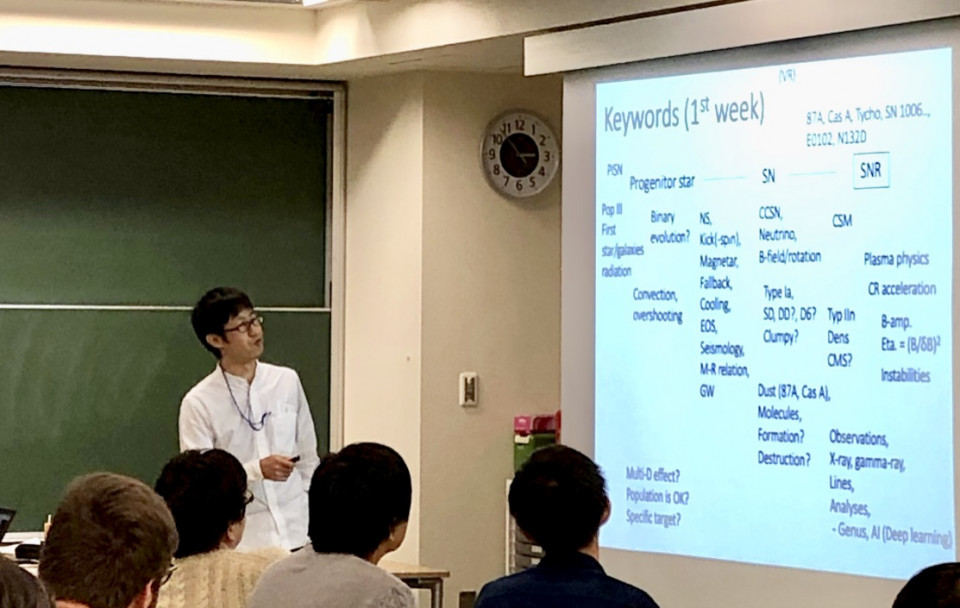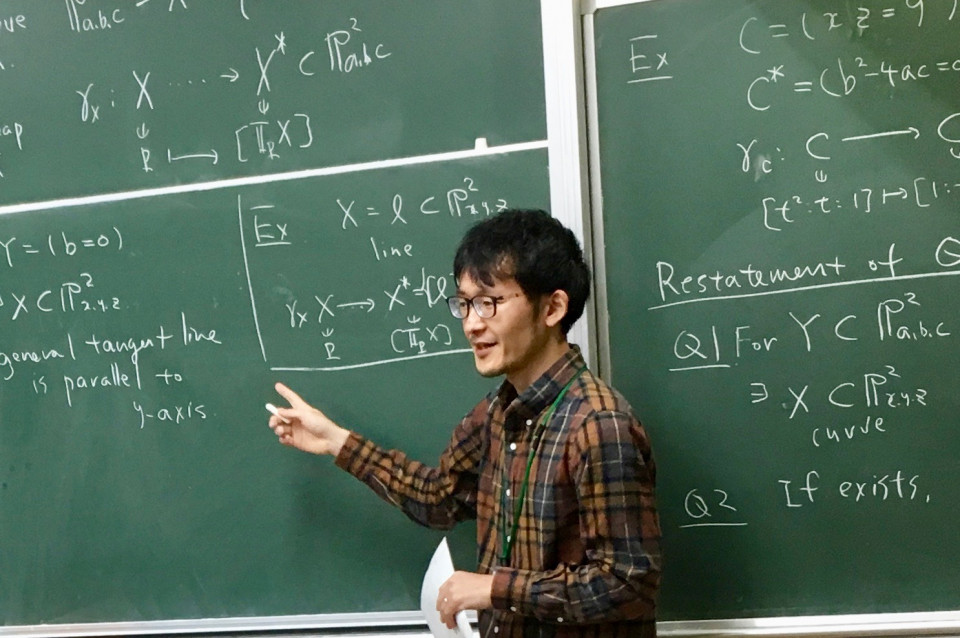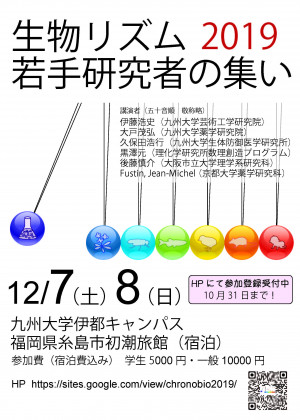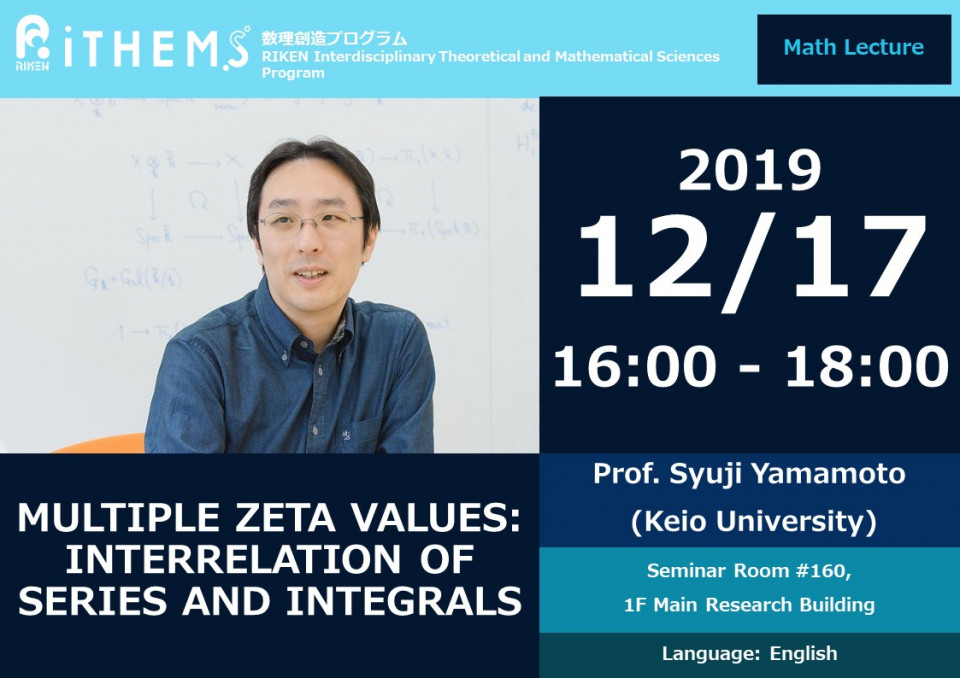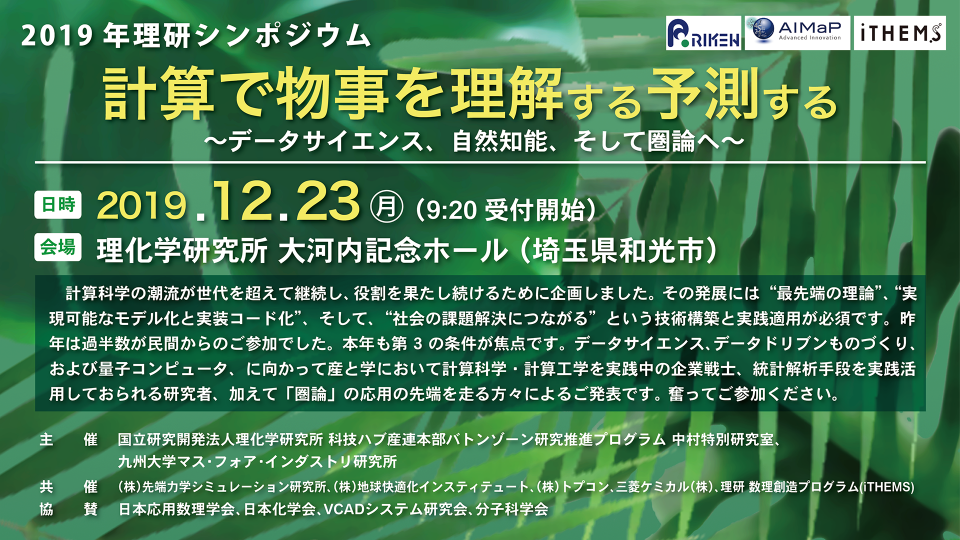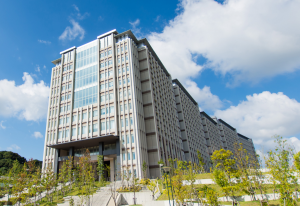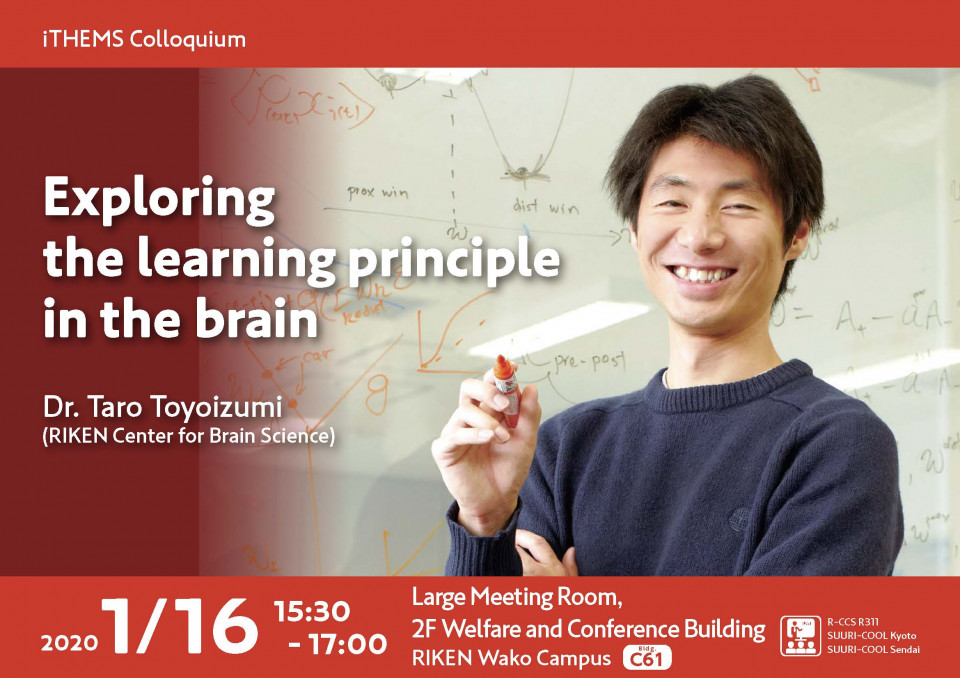Volume 79
Back to Newsletter List
Announcement
Cooperative agreement formed between Nara Women's Univ. and iTHEMS
2019-11-22
iTHEMS has exchanged a cooperative agreement with Faculty of Science and Faculty of Human Life and Environment, Nara Women's Univ. (NWU), to promote gender diversity in Science. The picture shows the signing ceremony held on Nov.11 at NWU: Tetsuo Hatsuda from iTHEMS (left), Prof. T. Watanabe from Dean of Faculty of Science (middle) and Prof. M. Takada from Dean of Faculty of Human Life and Environment (right).
NWU is one of the two national women's universities in Japan and was founded 110 years ago on 1908. Currently, 21%(Math.), 10%(Bio.) and 13%(Phys. and Chem.) of women's Master students in Japanese national universities are produced from NWU.
As a first joint effort between iTHEMS and NWU, RIKEN researchers will deliver a series of lectures "Frontiers in mathematics, universe, matter, life and information" from the fall of 2020 for the 1st and 2nd year undergraduate students in NWU. The lecturers on 2020 are Tetsuo Hatsuda (iTHEMS, nuclear physics), Yuka Kotorii (AIP/iTHEMS, mathematics), Shigehiro Nagataki (CPR/iTHEMS, astrophysics), Makiko Nio (RNC, particle physics), Ryosuke Iritani (iTHEMS, biology), Ai Niitsu (CPR, chemistry), Shigenori Otsuka (R-CCS/iTHEMS, meteorology) and Emi Yukawa (CEMS, information).
Research News
Discovery of teraelectronvolt photons from gamma-ray bursts: A new window for exploring the most luminous explosions in the Universe
2019-11-22
On January 14, 2019, TeV gamma rays (photons with energies a trillion times that of visible light) were clearly detected for the very first time from a gamma-ray burst (GRB; dubbed GRB 190114C) by the MAGIC telescopes. The very high energy of the individual photons as well as the high power of the total signal demonstrate that they must be produced by a physical process that is distinct from the previously known afterglow synchrotron radiation. Combined with extensive multiwavelength data obtained by a large number of observatories from the radio to GeV bands, the most likely mechanism is judged to be "inverse Compton” radiation associated with the afterglow, whereby some synchrotron photons are significantly boosted in energy by colliding with high-energy electrons [1]. These findings were reported in two papers published on Nov. 21 in the journal Nature, one authored by the MAGIC Collaboration where Susumu Inoue of iTHEMS is the first corresponding author [2], and the other co-authored by a large team of astronomers including the MAGIC Collaboration [3].
Caption for the figure:
Spectra of GRB 190114C in the X-ray to TeV gamma-ray energy range during two time intervals (top: 68-110 seconds after the beginning of the GRB; bottom: 110-180 seconds ibid.). Markers reflect data: white circles are observed MAGIC data; orange circles are MAGIC data corrected for intergalactic propagation effects. Curves are theoretical models: thin solid curves are synchrotron emission and inverse Compton emission shown separately; thick blue curves are their sum; dashed curves are inverse Compton emission when neglecting internal absorption effects.
References
Research News
Article about iTHEMS on Journal of the Mathematical Society of Japan
2019-11-19
Professor Takashi Tsuboi, Deputy Program Director of iTHEMS posted an article about RIKEN iTHEMS on Journal of the Mathematical Society of Japan. See the article in the November issue from the following link.
Hot Topic
International WS "Collaborative Meeting on Supernova Remnants between Japan and USA" was held at RIKEN Wako campus and SUURI-COOL Kyoto
2019-11-19
An international WS "Collaborative Meeting on Supernova Remnants between Japan and USA" was held at RIKEN Wako campus (Nov. 7-8, 2019) and SUURI-COOL Kyoto (Nov. 11-12, 2019) with Masaomi Ono (ABBL/iTHEMS), Shiu-Hang Lee (Kyoto Univ.) and Shigehiro Nagataki (ABBL/iTHEMS) as organizers. The aim of this workshop was to bring together experts including young researchers on supernova remnants and other related topics, such as supernovae, progenitor stars, and neutron stars, for active discussion and to initiate possible collaborations among the participants. In both 1st and 2nd weeks, there were about forty participants. Experts from USA mainly on supernova remnants gave excellent talks from both aspects of theories and observations. Not only supernova remnants but also many other related topics were presented by participants from Japan and Taiwan including students. During the workshop, many possible future collaborations were intensively discussed.
Collaborative Meeting on Supernova Remnants between Japan and USA
November 7 (Thu) - 12 (Tue) 2019
Seminar Report
Math Seminar talks by Dr. Atsushi Ito
2019-11-20
The iTHEMS Math seminar was held on 8 Nov., inviting Atsushi Ito from Nagoya university. The title of the talk was "Some topics in projective geometry of algebraic varieties". The main subject of the talk was the Gauss map and the dual variety of an algebraic variety, which reflect the behavior of the tangent spaces at a moving point of the variety. In the first part, the speaker explained the duality theorem of the dual variety and the original variety, which holds in the usual setting but fails in the unusual (that is, in positive characteristic) setting. In the second part, we considered the dimension of the dual varieties. The main result says that the gap of the dimension of the dual variety from the expected dimension is determined by a fibration structure of the variety with a good fibres.
Some topics in projective geometry of algebraic varieties
November 8 (Fri) 16:00 - 18:10, 2019
Upcoming Events
Workshop
Supported by iTHEMS
Young Researcher Association for Biological Rhythms 2019
December 7 (Sat) - 8 (Sun) 2019
Lecturers:
Hiroshi Ito (Kyushu University)
Shigehiro Ohdo (Kyushu University)
Hiroyuki Kubota (Kyushu University)
Gen Kurosawa (RIKEN)
Shin G. Goto (Osaka City University)
Fustin Jean-Michel (Kyoto University)
Organizers:
Minako Isoda (Kyoto University)
Kyohei Uemoto (Kyoto University / Nara Institute of Science and Technology)
Shingo Gibo (RIKEN)
Motohide Seki (Kyushu University)
Yusuke Nakane (Nagoya University)
Arisa Hirano (University of Tsukuba)
This workshop is supported by RIKEN iTHEMS (RIKEN Interdisciplinary Theoretical and Mathematical Sciences Program).
Venue: School of Agriculture, Ito Campus, Kyushu Univiesiry
Event Official Language: Japanese
Seminar
iTHEMS Math Seminar
Multiple Zeta Values: Interrelation of Series and Integrals
December 17 (Tue) 16:00 - 18:10, 2019
Syuji Yamamoto (Associate Professor, Keio University)
Plan of the seminar: we separate each talk into two. In the first 60 minutes the speaker gives an introductory talk for non-mathematicians. After a short break, the second 60 minutes is spent for a bit more detailed talk for mathematicians (working in other areas). We welcome you joining both parts of the seminar or only the first/second half.
Abstract: This is an introduction to multiple zeta values (MZVs). Although the study of MZVs is related to various areas of mathematics, we will concentrate on the algebraic structures of MZVs themselves. The key point is that MZVs have two kinds of representations: nested series and iterated integrals. We present how these two representations yield rich algebraic relations among MZVs.
Venue: Seminar Room #160, 1F Main Research Building, RIKEN
Event Official Language: English
Conference
2019 RIKEN Symposium: Understand to Predict the properties of Things and Matters through Computational Calculations ~ Data Science, Natural Intelligence and Category Theory~
December 23 (Mon) 9:50 - 18:10, 2019
This workshop is supported by RIKEN iTHEMS (RIKEN Interdisciplinary Theoretical and Mathematical Sciences Program).
Venue: Okochi Hall, 1F Laser Science Laboratory, RIKEN
Event Official Language: Japanese
Workshop
RIKEN-Kyushu workshop on particle, nuclear and astrophysics
December 23 (Mon) - 24 (Tue) 2019
Organizers
Emiko Hiyama (Kyushu U./RIKEN)
Hiroshi Suzuki (Kyushu U.)
Tetsuo Hatsuda (RIKEN)
Venue: Faculty of Science, Ito Campus, Kyushu University
Event Official Language: Japanese
Colloquium
iTHEMS Colloquium
Exploring the learning principle in the brain
January 16 (Thu) 15:30 - 17:00, 2020
Taro Toyoizumi (Team Leader, Laboratory for Neural Computation and Adaptation, RIKEN Center for Brain Science (CBS))
Animals adapt to the environment for survival. Synaptic plasticity is considered a major mechanism underlying this process. However, the best-known form of synaptic plasticity, i.e., Hebbian plasticity that depends on pre- and post-synaptic activity, can surge coincident activity in model neurons beyond a physiological range. Our lab has explored how neural circuits learn about the environment by synaptic plasticity. The instability of Hebbian plasticity could be mitigated by a global factor that modulates its outcome. For example, TNF-alpha that mediates homeostatic synaptic scaling is released by glia, reflecting the activity level of surrounding neurons. I show that a specific interaction of Hebbian plasticity with this global factor accounts for the time course of adaptation to the altered environment (Toyoizumi et al. 2015). At a more theoretical level, I ask what is the optimal synaptic plasticity rule for achieving an efficient representation of the environment. A solution is the error-gated Hebbian rule, whose update is proportional to the product of Hebbian change and a specific global factor. I show that this rule, suitable also in neuromorphic devices, robustly extracts hidden independent sources in the environment (Isomura and Toyoizumi 2016, 2018, 2019). Finally, I introduce that synapses change by intrinsic spine dynamics, even in the absence of synaptic plasticity. I show that physiological spine-volume distribution and stable cell assemblies are both achieved when intrinsic spine dynamics are augmented in a model (Humble et al.2019).
Venue: Large Meeting Room, 2F Welfare and Conference Building (Cafeteria), RIKEN
Broadcast: R311, Computational Science Research Building, R-CCS, Kobe Campus, RIKEN / SUURI-COOL (Kyoto), Room 204-205, 2F Maskawa Building for Education and Research, North Campus, Kyoto University / SUURI-COOL (Sendai), Room 303, 3F AIMR Main Building, Advanced Institute for Materials Research (AIMR), Tohoku University
Event Official Language: English
If you would like to cancel your subscription or change your email address,
please let us know via our contact form.
Copyright © iTHEMS, RIKEN. All rights reserved.


